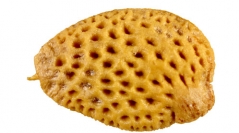

 European Journal of Taxonomy
943 (1) - Pages 1-23
European Journal of Taxonomy
943 (1) - Pages 1-23The fossil record of the diverse subfamily Passifloroideae (>750 species and 17 genera) is relatively poor. Despite the distinctiveness of its leaves (glandular and often emarginate), most of the fossils from this group have been described from seeds. Fossil seeds have been recovered from Europe, and North and South America. A lack of information on seed morphology for all the genera and tribes of this subfamily has prevented a tribe-level identification of the fossils and a better understanding of their biogeographic patterns. The Passifloroideae is divided into three tribes: Passifloreae with 10 genera, Paropsieae with six genera and the monotypic Jongkindieae. This study provides new descriptions for 15 species from 5 genera from the mostly Afrotropical tribe Paropsieae based on herbarium material, and introduces an online seed database and a key for 100 species of Passifloroideae compiled from literature and direct observations. Our study shows a low morphological diversity among the seeds of Paropsieae in comparison to a much larger diversity within Passifloreae. Some rare morphologies are only present in Passifloreae and can be used to assign seeds to this tribe. Within the Paropsieae, Androsiphonia has seed that are very distinct from those in the other genera in the tribe and also from the rest of the subfamily. The genus Paropsia exhibits two main morphotypes, while the genera Barteria, Paropsiopsis and Smeathmannia have very similar seeds with a highly conserved morphology. These results suggest that living or fossil Paropsieae cannot be identified confidently based solely on seed characters.
seeds, taxonomy, anatomy, paleobotany, botany